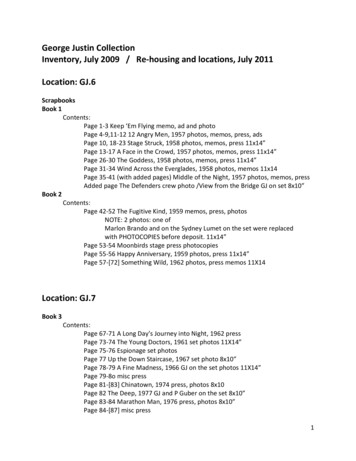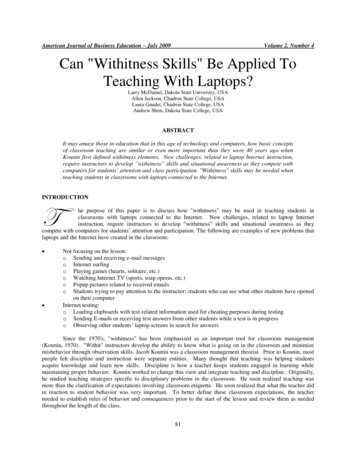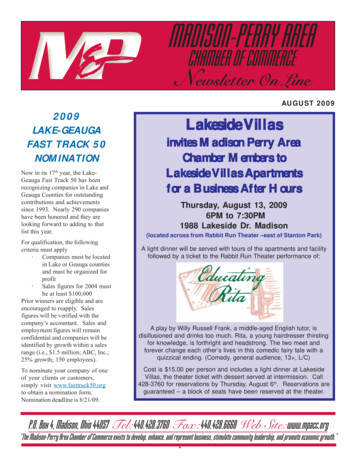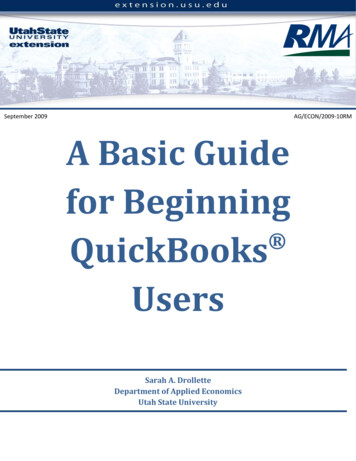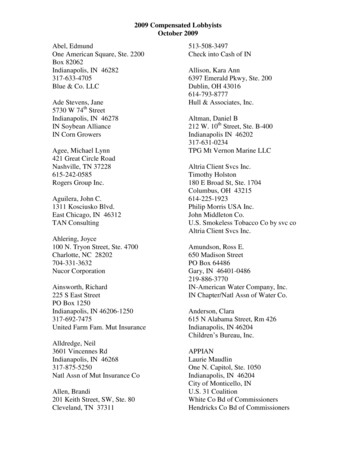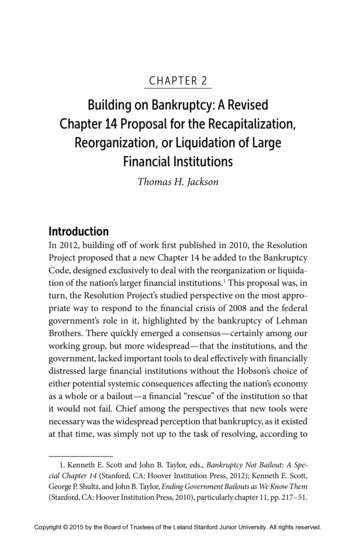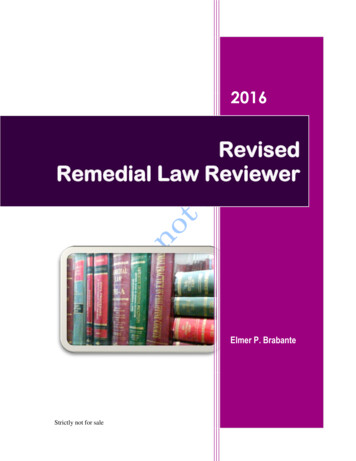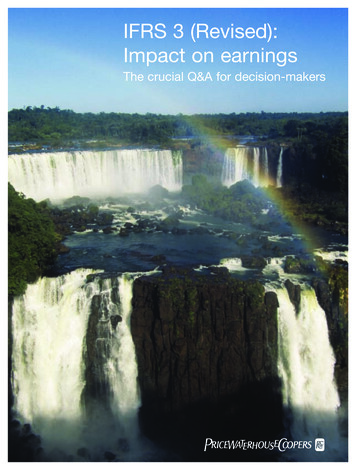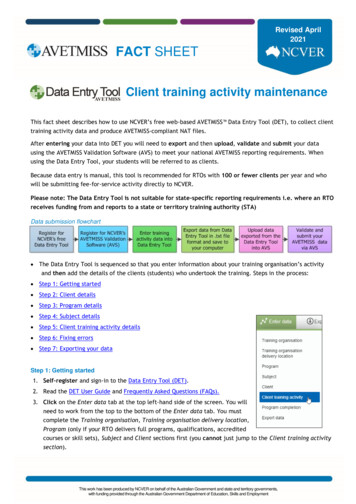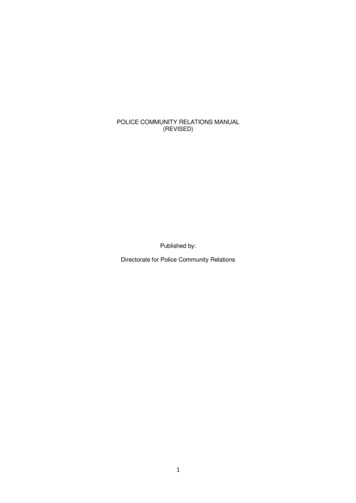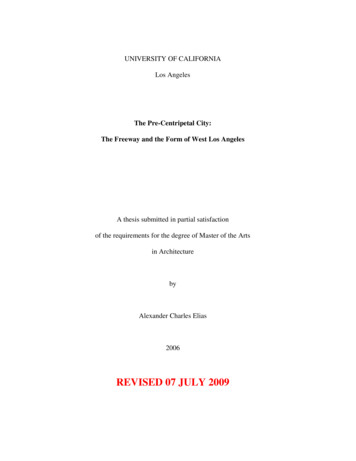
Transcription
UNIVERSITY OF CALIFORNIALos AngelesThe Pre-Centripetal City:The Freeway and the Form of West Los AngelesA thesis submitted in partial satisfactionof the requirements for the degree of Master of the Artsin ArchitecturebyAlexander Charles Elias2006REVISED 07 JULY 2009
The thesis of Alexander Charles Elias is approved.Diane FavroMark LeeDana Cuff, Committee ChairUniversity of California, Los Angeles2006ii
Table of ContentsIntroduction1PART 1Infrastructural Urbanism4Territory, Communication and Speed6Speed7Freeway Territory10Communication/ Linkages13PART 2The Transportation Palimpsest16Infrastructural History of West Los Angeles17PART 3Ladders25Analysis of West Los Angeles Infrastructure31The Bundled City33Internal Boundaries and Connectors36Westside Ladder40The Maze42Centripetal Devices44Conclusion46iii
Notes52Figures56Bibliography78iv
List of Figures1a. The West Los Angeles Subject Area561b. City of Los Angeles and Freeways572. Elevated Views from Route 405582a. Freeway Territory593. Submerged views from Route 405604. Linkages from Pico Blvd. and Route 10 Freeway615. Ladder Diagrams626. Boston's Central Artery637. West Los Angeles Infrastructure, 1925 and 1934648. Houston, 1992659a. West Los Angeles Grid and Non-grid Fragments669b. West Los Angeles Street Fragments6710. Bundled Infrastructure, 19556811. Bundled Infrastructure, 20056812. Linear City Models and Bundled Infrastructure6913. Freeway Node/ Boulevard Grid7014. Views Along Olympic Blvd.7115. Boulevards and Avenues7216. Westside Ladders73v
17. Spatial Isolation, Holmby Hills7418. Mazes7519. Grid Fragments, Cheviot Hills7620. Centripetal Devices77vi
ABSTRACT OF THE THESISThe Pre-Centripetal City:The Freeway and the Form of West Los AngelesbyAlexander Charles EliasMaster of the Arts in ArchitectureUniversity of California, Los Angeles, 2006Professor Dana Cuff, ChairThis thesis analyzes the transportation infrastructure and urban space of west LosAngeles and the freeway's part in structuring it. Albert Pope's 1996 book Laddersprovides an analytical and methodological springboard for the arguments herein,which are situated in the discourse of infrastructural urbanism. The central argumentof the thesis is that west Los Angeles is a pre-centripetal city that displays thecharacteristics of both centrifugal and centripetal development. Inhabitation of thefreeway is considered under Michel Foucault's "three great variables" of territory,communication and speed and provides an experiential basis from which to proceedvii
with subsequent historical and formal analyses of the area's urban form. This thesiswill argue that the early adoption of the automobile as the principal form oftransportation in the city was the result of the city's dispersed form, not its cause. Thefragmented street grids of west Los Angeles are evidence of its development as aconstellation of discrete villages. These are the primary characteristic of the precentripetal city. Analytic maps and diagrams compliment the written analysis anddevelop a catalogue of urban schema that contrast with those presented in Laddersand are unique to west Los Angeles. The thesis concludes by arguing that the effectsof freeway construction in west Los Angeles differ from those of other Americancities because of the unique physical characteristics of the city. These characteristicsare specific to time as well as place, making west Los Angeles a fully-realized late20th century American city, the experience of which is dominated by the inhabitationof its freeways.viii
Introduction“Cities are known by their symbols. Just as the Eiffel Tower defines Parisand the Statue of Liberty symbolizes New York, the freeway is theuniversal icon by which Los Angeles is described. The freeway network,in addition to being an important transportation system, is considered theworld over a symbol of Los Angeles.” 1Los Angeles' freeway system is the principal device through which we experiencethe city. Rather than simply being a route through the city to far-flung destinations, or theconduit by which a suburban population commutes to employment in a dense urban core,the Los Angeles freeway system is an infrastructural network that has a pervasive urbanpresence. Use of the freeway is a daily part of most Angelenos' experience of the city.This thesis will analyze the transportation infrastructure and urban space of westLos Angeles and the freeway's part in structuring it. The west side of Los Angeles, orwest Los Angeles, will serve as the focal point for this analysis. Geographic definitions ofwest Los Angeles vary. Here, west Los Angeles is defined as an area located west ofdowntown (figure 1a) and bound by Sunset Boulevard in the north, Robertson Boulevardin the east, and Venice and Lincoln Boulevards to the south and west, respectively. Thisarea includes portions of the municipalities of Santa Monica and Beverly Hills as well asthe City of Los Angeles (figure 1b). West Los Angeles is typical of much of Los Angeles.in that it is an area of single-family dwellings, situated in distinct neighborhoods; theseare separated by boulevards lined with commercial and light-industrial uses. Its earlyclusters of development were located along or at the termini of interurban and continentalrailways and their spurs. But as we shall see, ongoing development eventually filled-in1
the vacant areas between the "villages", creating a blanket of habitation characterized byfragmentation. It is also centered around the busiest freeway interchange in the UnitedStates. It is an area where the influence of the freeway is felt most acutely.The freeway is central to my arguments for two reasons. First, Los Angeles doesnot have an intensive mass transit system. Also, virtually all of the freeways that werebuilt in the developed areas of Los Angeles were constructed in one generation, 1950-70.The impact of this system on the city was immediate and it has a pervasive presence inthe urban fabric of the city.This thesis is organized in three parts. The first part, including this introduction,sets out the theoretical and methodological framework for the following sections. Thefirst part concludes with an investigation into the ways in which freeway inhabitationstructures the experience and perception of west Los Angeles. This investigation will beconducted under the rubrics of territory, communication and speed. Territory,communication and speed are Michel Foucault's "three great variables" of modern spatialexperience. "Territory" is the landscape of the city recast vis à vis freeway inhabitation."Communication" is a function of distance collapsed by speed, which affords the freewayinhabitant the opportunity to restructure the fabric of the city according to their ownitinerary. "Speed" is the agency that makes territory and communication possible. Thesecond part is an infrastructural history of Los Angeles. It will create the setting for theanalysis presented in part three. The infrastructural history of Los Angeles will befocused on the development of the form and infrastructure of the city and locates the2
advent of the freeway in a temporal and cultural context. The third part begins with anoverview of Albert Pope's 1996 book Ladders, which will provide an analytical andmethodological springboard for this thesis. I will extend the book's discussions on urbanform while developing a related set of arguments that are specific to west Los Angeles'urban schema and history. The freeway system was constructed in an existing urbanfabric. Therefore, in order to understand how the freeway operates, it is necessary first tounderstand where the freeway operates. In advancing his own arguments, Pope makesseveral references to Los Angeles to support his thinking. Much of Albert Pope's urbananalysis focuses on the "downtowns" of cities; those high-density areas of office towersand other commercial and institutional uses. Many of Pope's references to Los Angelesconcern its downtown area. But as the infrastructural history of the city will demonstrate,Los Angeles downtown area was never the sole center of the city, nor did the city growout of that downtown in a centrifugal pattern. The majority of the city was constructed ina dispersed, low-density form. I will demonstrate that Ladders, while employing a broadrange of historic and contemporary references, makes generalizations about Los Angelesthat are ultimately inaccurate. This will segue into a formal analysis of west Los Angeles'infrastructure and urban form. Pope's analysis produced a series of diagrams that codifieda contemporary urban phenomenon. This thesis will employ analytic maps and diagramsin a similar way. I will develop a catalogue of concepts related to Ladders, but specific towest Los Angeles. The central argument I will make is that Los Angeles, as representedin this particular area, is a "pre-centripetal" city. The pre-centripetal city displays the3
characteristics of both centrifugal and centripetal development. It pre-dates Pope'scentripetal city and its development was subject to forces that were distinct from thosethat shape the urban forms of Ladders. It is one where the influence of the automobilewas felt early due to particular social and economic forces, and it stands apart fromidealized centrifugal and centripetal typologies as a unique urban form.PART 1Infrastructural UrbanismThis thesis is situated in an area of contemporary study and practice calledinfrastructural urbanism, after the eponymously-titled 1999 essay by Stan Allen."Infrastructural urbanism offers a new model for practice and a renewed sense ofarchitecture's potential to structure the future of the city. Infrastructural urbanismunderstands architecture as a material practice-- as an activity that works in and amongthe world of things, and not exclusively with meaning and image."2 Allen's argument isnot an indictment of architecture or architects. It exposes what Allen regards asarchitecture's muteness in the face of contemporary city making. Infrastructural urbanism,through theory and practical methodology, seeks to define a new form of architecturalpractice that will invigorate the city with architecture while resisting "a simple return tothe now discredited certainties of modernism".3 Albert Pope offers a similar position:"What the city has been (as a designed entity), or could be (as a designedentity), dominates academic and professional thinking as a transparentattempt to regain our formal spatial prerogatives, our fixation with theknown and designable, to the neglect of the actual state of thecontemporary urban environment."44
To call infrastructural urbanism a discourse would be misleading. A discourseengages in commentary or critique of a subject without necessarily working directly withthe subject as an end unto itself. As argued by Allen, infrastructural urbanism is apractice. Identifying it as such means that written work that situates itself within theframework of infrastructural urbanism cannot be commentary or critique, however wellinformed. Writing about a subject in this context is analytic in nature and is a precursor toand foundation for the "concrete proposals and realistic strategies of implementation"5that are intrinsic to practice. Commentary or criticism may have an analytic component,but writing within a practice requires that the subject be fixed and knowable; quantifiablein addition to qualifiable. In the context of architecture and urbanism, the subject must bematerial. This is not to suggest that infrastructural urbanism in particular, or architecturein general, does not encounter social, political, economic and historical conditions. Onthe contrary, infrastructural urbanism is involved in these conditions through its ownmaterial analysis.Similarly, infrastructural urbanism resists what Allen calls the "representationalimperative in architecture."6 In other words, it is invested in architecture's instrumentalityand not its indexical trajectory. This type of practice is not representational, butdiagrammatic. Infrastructural urbanism does not attempt to represent an idea, or record(index) the forces present at its making. Rather, it expresses the instrumental qualities ofits analysis on a large scale. As such, it is "a practice devoted to the production ofdirected fields in which program, event and activity can play themselves out."7 To5
identify infrastructural urbanism as a diagrammatic practice exposes it to a diverse bodyof scholarship on the subject of the diagram and suggests associations with otherpractices that are invested in diagrams as formal devices. Here, the diagram is notassociated with the parti or any other formal schema, nor is it evocative of any geometricrigor or organization. Infrastructural urbanism operates diagrammatically; the diagram isnot the product of this practice. Rather, it is an analytic and conceptual tool, one thataffords the architect the opportunity to work at a large scale with specificity, but notcontrol.Therefore, this thesis will develop diagrams through analysis, not for the purposeof generating ideal forms that can be applied in any other context, but for the purpose ofunderstanding specific urban conditions as a necessary precursor to working within theirbounds.Territory, Communication and Speed"Michel Foucault: With the birth of these new technologies and these neweconomic processes one sees the birth of a new sort of thinking aboutspace.that extends far beyond the limits of urbanism and architecture.Paul Rabinow: So architects are not necessarily the masters of space thatthey once were, or believed themselves to be.M.F.: That's right. They are not the technicians or engineers of the threegreat variables-- territory, communication and speed. These escape thedomain of architects." 8Stan Allen has written that "[t]erritory, communication and speed are properlyinfrastructural problems, and architecture as a discipline has develope
Albert Pope's 1996 book Ladders provides an analytical and methodological springboard for the arguments herein, which are situated in the discourse of infrastructural urbanism. The central argument of the thesis is that west Los Angeles is a pre-centripetal city that displays the characteristics of both centrifugal and centripetal development. Inhabitation of the freeway is considered under .

